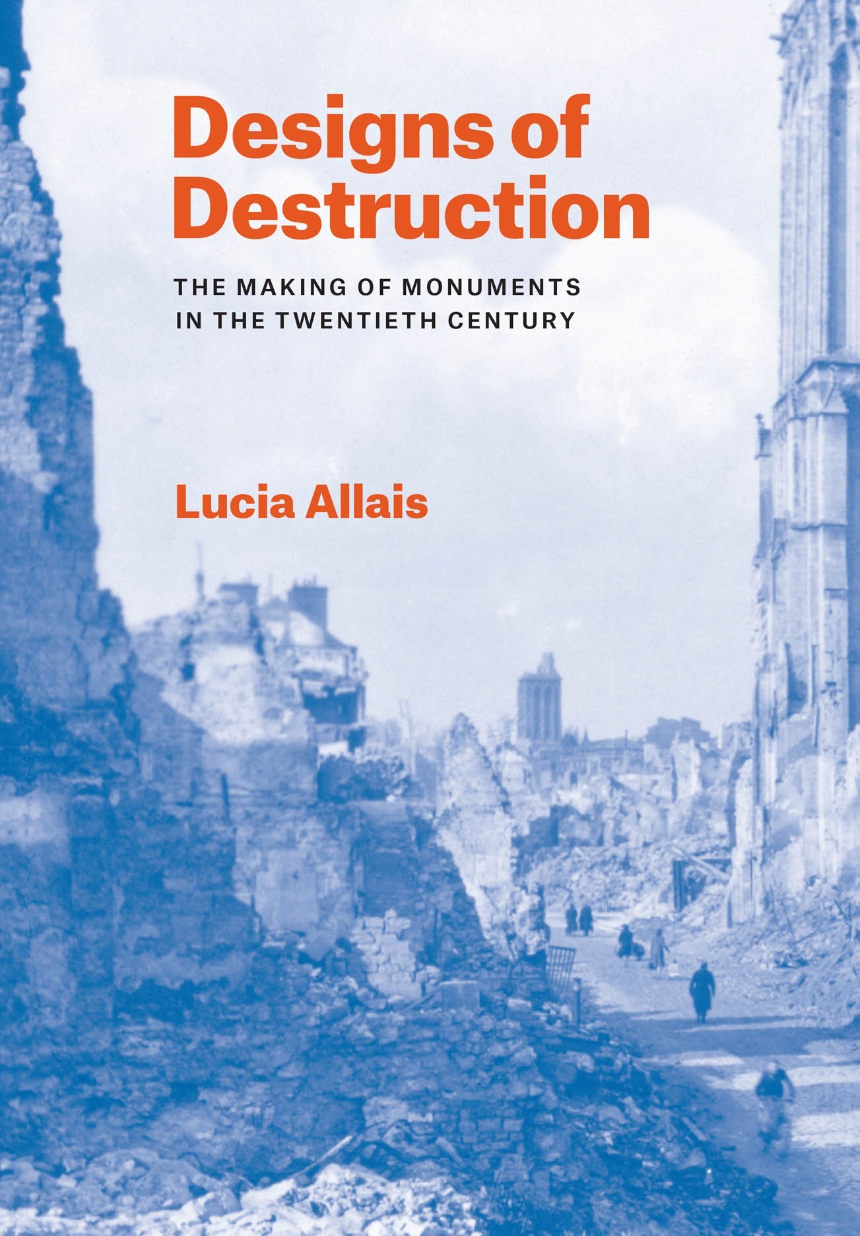Designs of Destruction
The Making of Monuments in the Twentieth Century
The twentieth century was the most destructive in human history, but from its vast landscapes of ruins was born a new architectural type: the cultural monument. In the wake of World War I, an international movement arose which aimed to protect architectural monuments in large numbers, and regardless of style, hoping not only to keep them safe from future conflicts, but also to make them worthy of protection from more quotidian forms of destruction. This movement was motivated by hopeful idealism as much as by a pragmatic belief in bureaucracy. An evolving group—including architects, intellectuals, art historians, archaeologists, curators, and lawyers—grew out of the new diplomacy of the League of Nations. During and after World War II, it became affiliated with the Allied Military Government, and was eventually absorbed by the UN as UNESCO. By the 1970s, this organization had begun granting World Heritage status to a global register of significant sites—from buildings to bridges, shrines to city centers, ruins to colossi.
Examining key episodes in the history of this preservation effort—including projects for the Parthenon, for the Cathedral of St-Lô, the temples of Abu Simbel, and the Bamyian Buddahs —Lucia Allais demonstrates how the group deployed the notion of culture to shape architectural sites, and how architecture in turn shaped the very idea of global culture. More than the story of an emergent canon, Designs of Destruction emphasizes how the technical project of ensuring various buildings’ longevity jolted preservation into establishing a transnational set of codes, values, practices. Yet as entire nations’ monumental geographies became part of survival plans, Allais also shows, this paradoxically helped integrate technologies of destruction—from bombs to bulldozers—into cultural governance. Thus Designs of Destruction not only offers a fascinating narrative of cultural diplomacy, based on extensive archival findings; it also contributes an important new chapter in the intellectual history of modernity by showing the manifold ways architectural form is charged with concretizing abstract ideas and ideals, even in its destruction.
347 pages | 8 color plates, 123 halftones | 7 x 10 | © 2018
Architecture: History of Architecture
History: European History, History of Ideas
Reviews
Table of Contents
1. “Wardens of Civilization”: Conservation and Diplomacy at the 1931 Athens Conference
2. “Battles Designed to Preserve”: The Allies’ Lists of Monuments in World War II
3. Unwitting City Planning: Maps of Monuments and the American Bombing of Europe, 1943–1945
Bridge: Let’s Visit UNESCO House
4. “Stones Also Die”: UNESCO and the Decolonization of Museums, 1960–1975
5. Integrities: The Salvage of Abu Simbel, 1960–1980
Coda: Viscosities
Acknowledgments
List of Acronyms
List of Archives
Notes
Awards
Modernist Studies Association: Modernist Studies Association--First Book Prize
Shortlist
